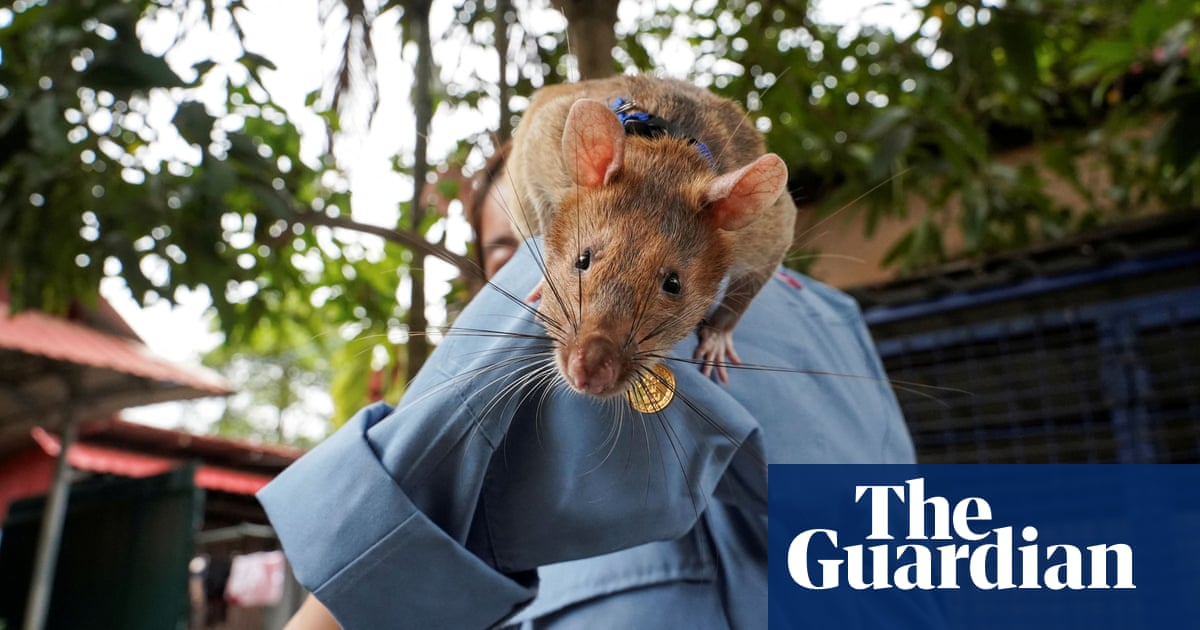
In the Dr Dolittle books and films, the ability to “talk to the animals” captured the imagination. Now scientists are being offered a $10m prize to create real conversations.
The Coller Dolittle Challenge for Interspecies Two-Way Communication has been launched by the Jeremy Coller Foundation and Tel Aviv University. While the use of AI is not obligatory, the team say the technology can boost almost all proposals.
“Just as the Rosetta Stone unlocked the secrets of the hieroglyphics, I am convinced that the power of AI can help us to unlock interspecies conversation,” said Jeremy Coller, chair of the foundation.
The team say the idea has precedence: researchers have recently developed machine-learning algorithms to translate bat squeaks, allowing them to identify the subject of squabbles.
Other efforts in the field have included algorithms to decode the emotions of pigs from their grunts, and the squeaks of rodents to identify when they are stressed. The Earth Species Project, a California non-profit group, is also working in the area, hoping to develop a system that can be applied to all species.
“In recent years, the scientific community’s understanding of the communication patterns of non-human organisms has advanced in leaps and bounds,” said Prof Yossi Yovel of Tel Aviv University, who is chair of the Coller Dolittle Prize and co-authored the bat study.
While the grand prize for “cracking the code” is an award of either a $10m (about £7.8m) equity investment or a $500,000 cash prize, there will be an annual prize of $100,000 to help researchers in the field come up with “scientifically rigorous models and algorithms for coherent communication with non-human organisms until interspecies communication is achieved”.
Criteria for the smaller prizes include that approaches are non-invasive and applicable to a range of contexts, are based on the animals’ normal communication signals, and allow researchers to measure the response of the animal to attempts to communicate with it.
“We hope to announce the criteria for the grand prize after two to three years of small prizes,” said Yovel.
The team behind the prize, which closes for submissions on 31 July, said the goal is to develop a system whereby animals do not realise they are actually communicating with humans – similar to the Turing test for AI, in which the goal is to create a computer system whose conversation with a human is indistinguishable from that of a real person.
“We are open to any organism and any modality from acoustic communication in whales to chemical communication in worms,” said Yovel.
The team add that the prize could have important ramifications for understanding animal sentience, and hence provide support for animal rights.
Peter Gabriel, the musician and co-founder of Interspecies Internet, who helped to develop the concept of the prize, said: “When I played music with bonobo apes, I was stunned by their intelligence and their musicality … I’m delighted that there are serious scientists now engaged both with understanding their communication and ways through which we might begin meaningful interspecies communication.”
Dr Katherine Herborn, an animal behaviour researcher at the University of Plymouth, said that one welfare application of technologies for decoding animal communication was in understanding what farm animals might need to improve their management.
However, some experts have raised ethical questions around conversing with animals and questioned whether AI can truly shed light on the meaning or function of animals’ vocalisations.
“I think no amount of AI programming can substitute for long-term, detailed knowledge of the society in which animals communicate,” said Robert Seyfarth,
emeritus professor of psychology at the University of Pennsylvania.
“Trying to uncover the meaning of a baboon’s grunt, a dolphin’s whistle or an elephant’s rumble without knowing the social background – this takes years – is like jumping to page 137 of Pride and Prejudice and trying to explain why Elizabeth Bennett says no to Mr Darcy without knowing anything about their history.”
Clara Mancini, professor of animal-computer interaction at the Open University, said it was very plausible that AI will help us to decipher animal communication. “If successful, in my view, this would be one of the most worthwhile human achievements made possible by this fast-developing technology,” she said.
But, she added, whether succeeding in this grand challenge will truly allow us to understand animals’ experience is a different matter.
“More importantly, though, the question is whether we will be willing to truly listen to what animals have to say and finally grant them the fundamental entitlements that their intrinsic dignity demands. I sincerely hope so.”












